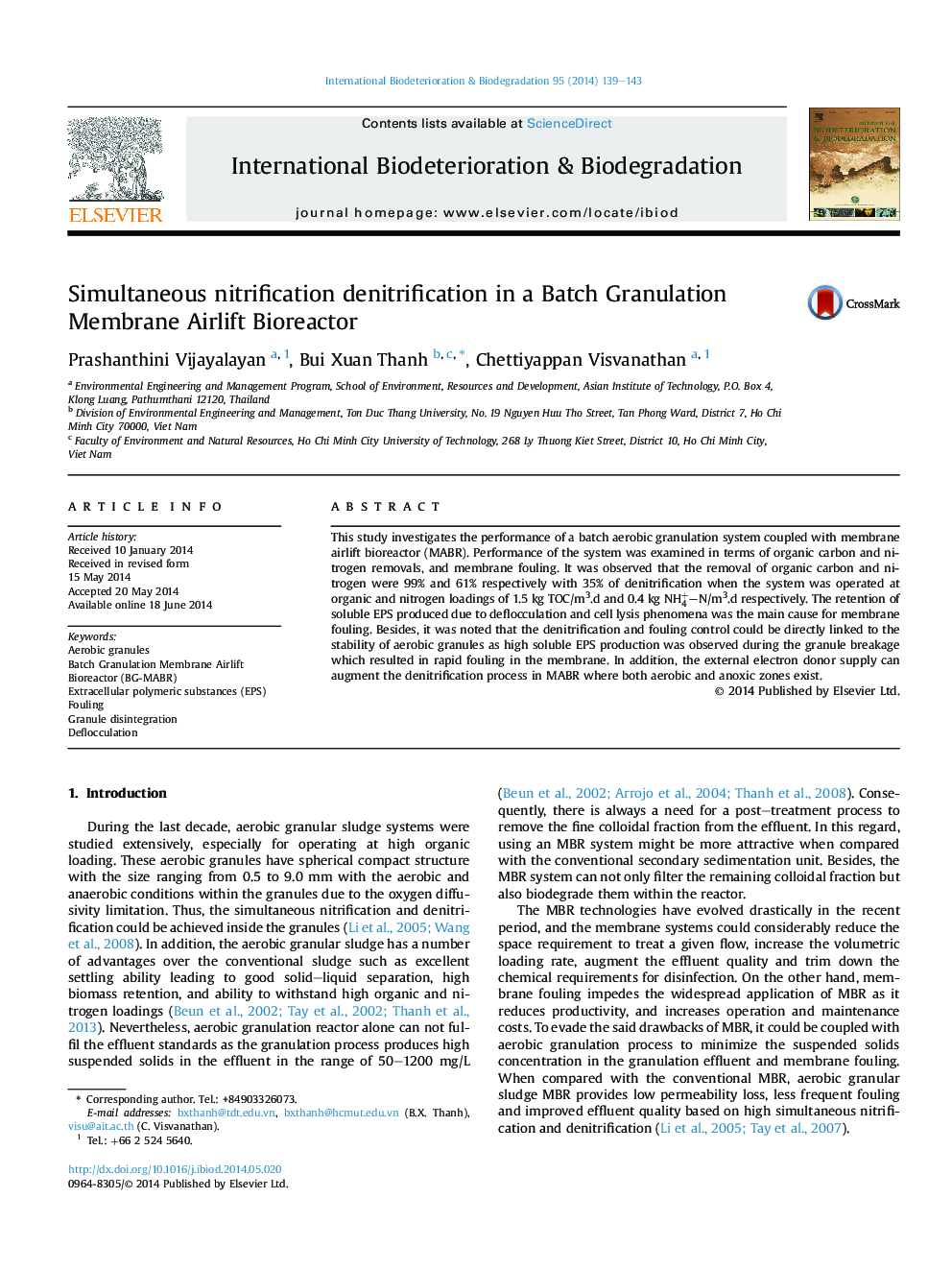| Article ID | Journal | Published Year | Pages | File Type |
|---|---|---|---|---|
| 4364614 | International Biodeterioration & Biodegradation | 2014 | 5 Pages |
•This study investigates the performance of a batch aerobic granulation system coupled with membrane airlift bioreactor (MABR).•Removal of organic carbon and nitrogen in the system were 99% and 61% respectively with a 35% of denitrification.•The retention of soluble EPS produced due to deflocculation and cell lysis phenomena was the main cause for membrane fouling.•The denitrification and fouling control could be directly linked to the stability of aerobic granules.•Granule breakage resulted in rapid fouling in the membrane.
This study investigates the performance of a batch aerobic granulation system coupled with membrane airlift bioreactor (MABR). Performance of the system was examined in terms of organic carbon and nitrogen removals, and membrane fouling. It was observed that the removal of organic carbon and nitrogen were 99% and 61% respectively with 35% of denitrification when the system was operated at organic and nitrogen loadings of 1.5 kg TOC/m3.d and 0.4 kg NH4+–N/m3.d respectively. The retention of soluble EPS produced due to deflocculation and cell lysis phenomena was the main cause for membrane fouling. Besides, it was noted that the denitrification and fouling control could be directly linked to the stability of aerobic granules as high soluble EPS production was observed during the granule breakage which resulted in rapid fouling in the membrane. In addition, the external electron donor supply can augment the denitrification process in MABR where both aerobic and anoxic zones exist.
